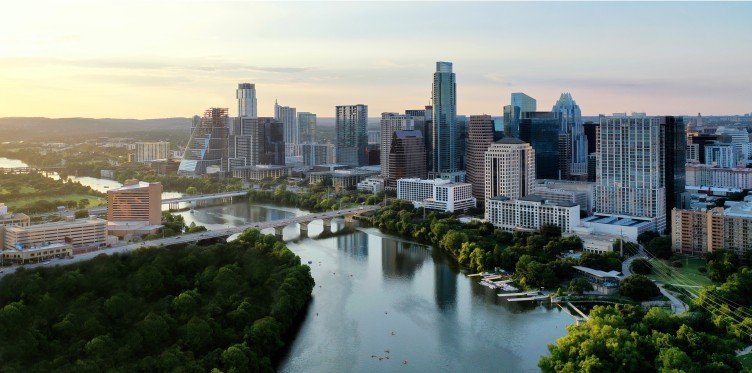Unpacking the Barriers & Solutions for Existing Building Decarbonization
The built environment, consisting of both new and existing buildings, is one of the highest emitting sectors, producing an estimated 40% of global CO2 emissions. Mitigating the emissions from this sector is critical to putting the world on a path to net zero.
One of the best ways to achieve this is by retrofitting existing buildings; in short, the process of changing a building's systems or structure after its initial construction and occupation to improve its efficiency, sustainability and overall performance. Retrofitting is crucial because it is well documented that it can take decades to make up for the impacts of demolishing an existing building and constructing a new one. Decreasing energy consumption through energy efficient equipment, improving building insulation, using building energy management systems to track and understand energy use, and turning to renewable energy, for example, are some simple retrofit strategies that can help buildings considerably reduce the amount of CO2 they are emitting.
However we are still not where we need to be on retrofits. Despite years of green building efforts, GHG emissions from the global buildings sector reached an all time high in 2021. According to the World Economic Forum, to reach net zero, we must retrofit at least 3% of stock per year, up from our current pace of about 1% globally.
There are a few key challenges that we need to address in order to achieve this outcome. The top barriers existing buildings face in going green are:
Lack of urgency
The market still does not fully comprehend the urgency of greening existing buildings in order to meet the Paris Agreement targets, so it is not taking the transformative steps necessary for the sector to achieve net zero. Having an honest assessment, baseline understanding and quality data improves decision-making. What you don’t measure, you can’t track. Leading with data is key. At GNFZ, we strive to address this by providing tools that enable people to assess their building’s baseline at the onset, which will help the sector understand the role their assets play in getting the global market to net zero.
Financing and cost
Existing buildings face barriers in finding capital compared to new construction, so their capital needs to be used judicially. GNFZ’s strategy here is to provide buildings with an incremental path to pursue net zero. Incrementalism is key; one of the big deterrents that existing buildings face in going green is that when pursuing certification standards they often have to front-end all their costs to achieve certification. Our process allows businesses to prioritize strategies that reduce their carbon emissions and avoid the long-term costs of having to remediate it down the line. Our incremental approach also supports incremental cost deployment.
The need for accurate data on ROI to make the business case
In my opinion, the number one issue that existing buildings face in going green is accurate data on Return on Investment, or ROI. It’s not technology – there are plenty of solutions out there in the market that are leading to more energy efficient buildings and advancements in clean tech continue to offer new and improved solutions.
GNFZ did research in Q1 of 2022 that highlighted how this is impacting net zero building. We conducted in-depth interviews with policy elites and business opinion influencers in the U.S. and then followed with a general population survey. What we heard most from respondents is that ROI data was what they thought was needed most to advance net zero in buildings.
Those working in green building – building managers, developers, owners, sustainability consultants, etc. – didn’t have enough good ROI data to make the case to key stakeholders and investors on the benefits of greening existing buildings. They also lacked accurate information on the best practices their peers were implementing that delivered them an ROI.
I believe good ROI data is the silver bullet we need to scale up decarbonization efforts. That’s one of the goals of the platform my organization is launching: we give businesses a simple calculation of their scope 1, 2 and 3 emissions that they can use to accurately report on ROI to their stakeholders.
Democratizing leadership
The final issue is that many leaders are prevented from being recognized for green building efforts they are making because most of the current green building programs out there are prescriptive and do not allow for incremental progress. While the top 10% of the existing building sector can certainly take advantage of this, GNFZ is focused on making sure the unaddressed 90% of buildings have a roadmap to get to net zero — which addresses one of the largest opportunities to both curb greenhouse gas emissions and promote equity by focusing not only on buildings but the people inside them. What makes our solution fundamentally different is that it is open and incremental.
The way forward
I believe that the best way to address the barriers I mentioned above is to realign our approach to implementation of net zero solutions; decentralized climate action and incremental paths to decarbonization, are, together, the most promising means of scaling up retrofitting efforts and existing building decarbonization. The best way to do this is through data and education. Good data on ROI will convince stakeholders and investors and enable decarbonization of existing buildings to scale as well as show building owners, developers, their investors, tenants and others the benefits of building energy efficiency retrofits. Finally, an incremental path for decarbonization is crucial, I always say that a million incremental steps is what will move us to net zero.
Overall, my advice would be to not be intimidated and find the path to net zero that is right for your buildings and budget; it can be an incremental approach, so long as net zero operations remain the core objective. What matters is recognition of the issue and a laser focus on net zero.
And if you need help, GNFZ is here to support you every step of the way: globalnetworkforzero.com/platform.

